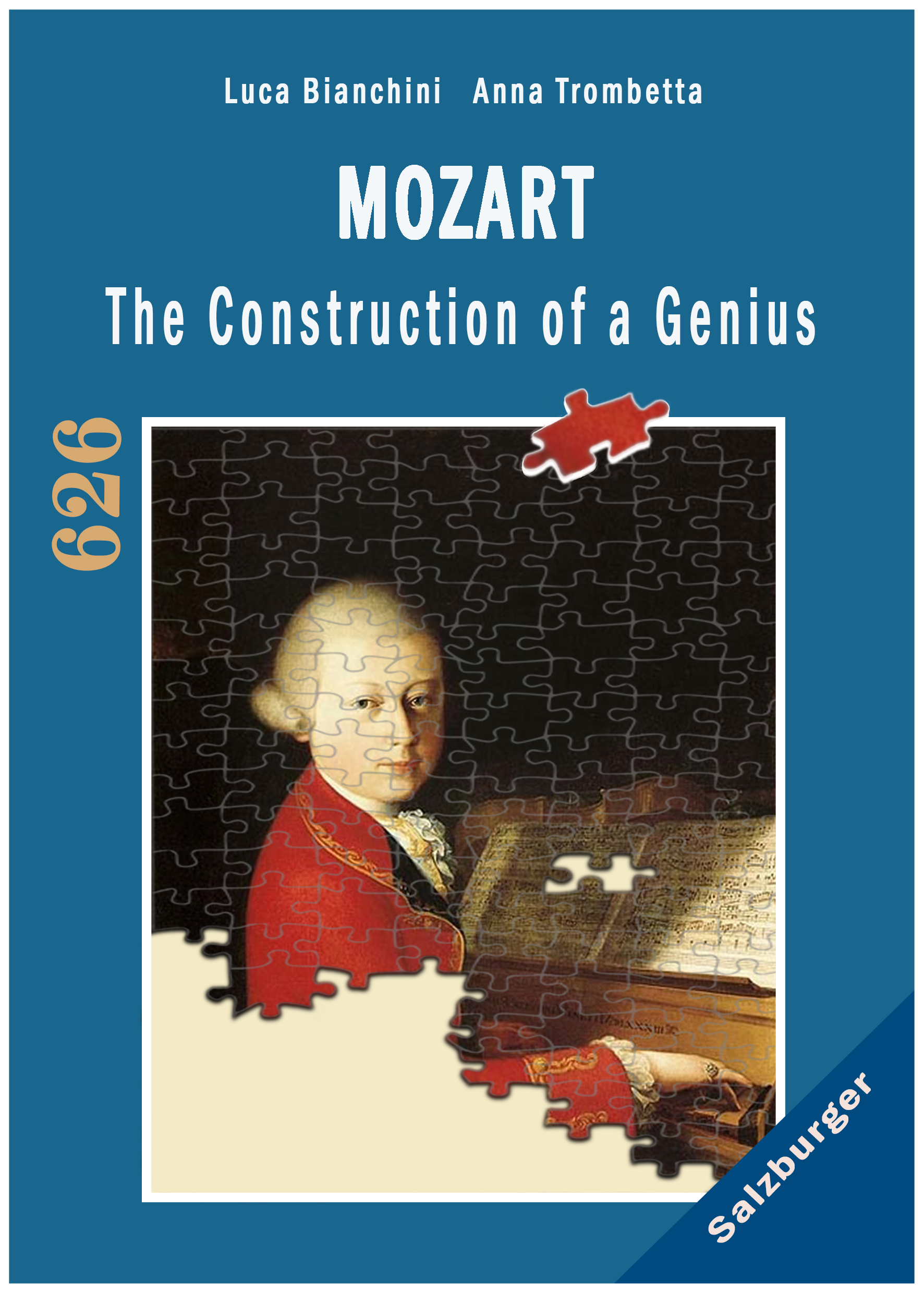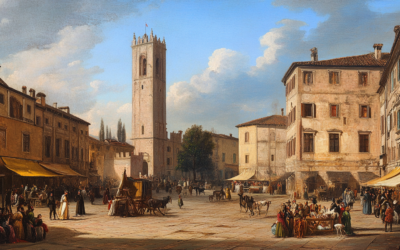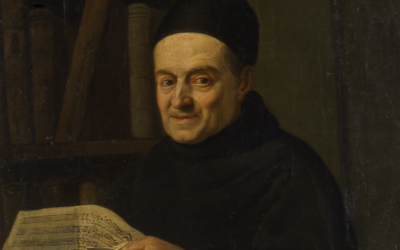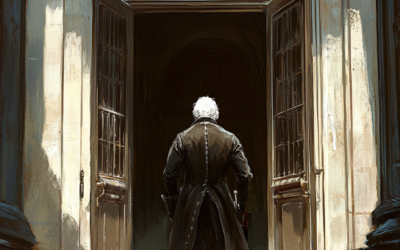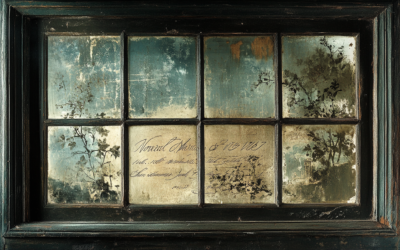Wolfgang Amadé Mozart
Unmasking the Myths: The Deception Surrounding Mozart's Legacy
Anton Eberl’s confrontation with Constanze in 1798 exposed a web of deceit surrounding Mozart’s legacy, revealing that several of his compositions were falsely attributed to the late composer. This chapter uncovers the ethical dilemmas and controversies that have marred the posthumous reputation of one of history’s most celebrated musicians.”
Mozart The Construction of a Genius: The Untold Story
Mozart: The Construction of a Genius” uncovers how the myth of Mozart was crafted after his death in 1791, initially to support his widow, then exploited by publishers, and later used to elevate Mozart as a cultural icon. Bianchini and Trombetta reveal that the personal catalogue attributed to Mozart is a late 18th-century fabrication, challenging long-held beliefs about his legacy.
“It is a compliment for me that even experts deemed these works to be Mozart’s creations, but I cannot allow the musical audience to continue being deceived.” – Anton Eberl
Mozart The Construction of a Genius
The Hidden Truth Behind Mozart’s Compositions
In the summer of 1798, a remarkable and unsettling series of events began to unfold. Multiple composers, including Anton Eberl, alleged that Mozart’s widow, Constanze, had misattributed their compositions to her late husband, Wolfgang Amadeus Mozart. This chapter delves into these claims, providing substantial evidence that challenges the authenticity of some works long credited to Mozart. Eberl, a distinguished composer in his own right, publicly voiced his scepticism, revealing that several of his compositions were being sold under Mozart’s name. His revelations sparked significant criticism and brought to light a series of deceptions that continue to taint Mozart’s legacy.
Anton Eberl’s Struggle for Recognition
Anton Eberl’s confrontation with Constanze was a courageous move in an era when challenging the legacy of a musical giant like Mozart was nearly unthinkable. In a public statement in 1798, Eberl disclosed that several music stores were selling his compositions as Mozart’s. Despite the fact that even experts had mistaken his works for Mozart’s, Eberl felt compelled to correct the public record, insisting that the musical audience not be misled by these fraudulent attributions. His statement not only questioned Constanze’s integrity but also highlighted the broader issue of misattribution that plagued the posthumous reception of Mozart’s works.
The Leipzig Literary Gazette’s Scathing Critique
Eberl’s revelations did not go unnoticed. The editor of the Leipzig Literary Gazette accused Constanze of engaging in deceptive practices, suggesting that she had little respect for her late husband’s legacy. The article called for further investigation into these ‘thefts’ and condemned Constanze’s involvement in misattributing works to Mozart. This criticism brought to the forefront the ethical dilemmas surrounding the posthumous management of Mozart’s oeuvre and questioned the validity of many works credited to him.
The Confusion of Identities: Eberl’s Compositions
Anton Eberl’s contributions to music were significant, yet his legacy has been overshadowed by the false attributions of his works to Mozart. His Symphony in C major and Keyboard Sonata in C minor were both mistakenly attributed to Mozart, with the latter even being hailed as one of Mozart’s finest compositions. This misattribution not only deprived Eberl of the recognition he deserved but also elevated the status of these works merely because they were thought to be Mozart’s. The association with Mozart’s name had a powerful effect, illustrating how branding could influence the reception of a composition.
The Role of the Allgemeine musikalische Zeitung
The Allgemeine musikalische Zeitung, under the editorship of Friedrich Rochlitz, played a pivotal role in shaping the posthumous image of Mozart. The publication, which aimed to promote the Complete Works of Mozart, often featured stories about his life provided by Constanze. However, Rochlitz’s editorial approach was more focused on the appeal of these anecdotes rather than their authenticity. These unverified stories were later incorporated into Mozart’s biographies, creating a distorted narrative that has persisted for centuries.
The Questionable Clarinet Concerto K. 622
One of the most famous examples of the questionable authenticity of works attributed to Mozart is the Clarinet Concerto K. 622. Despite its presence in Mozart’s personal Thematic Catalogue, significant discrepancies exist between the Catalogue and the original manuscript. The genuine manuscript of the Clarinet Concerto remains missing, and the first publication of K. 622, released after Mozart’s death, is believed to have been reconstructed from an incomplete basset horn concerto. This raises serious questions about the true authorship of the piece and highlights the ongoing issues with the authenticity of Mozart’s posthumous works.
You May Also Like
Debunking the Romantic Virtuoso Image
The image of Mozart as a Romantic-era virtuoso is a misleading anachronism, fuelled by 19th-century propaganda. Wolfgang was no transcendental pianist, but a product of an era where music was more galant than heroic.
The Visit to Verona
In Verona, young Wolfgang Mozart impressed the local nobility, but the reality behind the scenes reveals a carefully managed public image, where strategic networking and curated praise played key roles in shaping his growing reputation.
Mozart’s Training
The myth of Mozart’s genius is nothing more than a carefully crafted illusion, propped up by misplaced attributions and romanticised biographies. Behind his so-called brilliance lies the reality of his father’s dominating influence and a lack of formal education.
From London to Vienna
The Mozart family’s journey from London to Vienna was marked by illness, failed opportunities, and the relentless ambition of Leopold Mozart, revealing the pressures and challenges behind the facade of success.
The Ambiguous Legacy of Leopold Mozart
This post explores the multifaceted and often controversial life of Leopold Mozart, providing insight into the complexities and contradictions that defined his career and legacy.
Mozart’s Illusory Triumphs
The story of the young Mozart’s so-called triumphs at the courts of Europe is a tale riddled with embellishments, half-truths, and fabrications—many courtesy of Leopold Mozart himself and those who later sought to mythologize his son. One such example is the visit to Munich on 12 January 1762.

